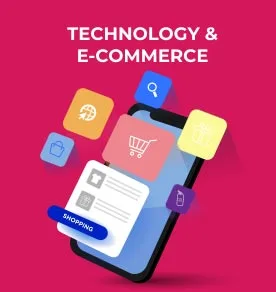Global Brands, Local Playbooks: How Timex, Tramontina, Brandman & Welspun Are Redefining India’s Consumer Landscape

From premium fashion accessories to home textiles and cookware, business heads are adapting their approach to resonate with diverse audiences, optimizing both offline and digital channels for reach, experience, and convenience.
By Vaishnavi Gupta, Associate Editor
Jun 05, 2025 / 12 MIN READ
In India’s rapidly evolving retail ecosystem, brands are increasingly leaning into consumer-first strategies, hyper-localization, and collaborations that blend brand ethos with customer aspirations. From premium fashion accessories to home textiles and cookware, business heads are adapting their approach to resonate with diverse audiences, optimizing both offline and digital channels for reach, experience, and convenience.
Collaboration as a Strategic Lever
Deepak Chhabra, Managing Director of Timex Group India Limited, underlined the growing importance of brand collaborations as a means to tap into new consumer sets. “When two brands come together, they should be complementing each other—it helps in reaching out to each other's consumer base. That’s how you build your audience,” he explained.
Timex’s short-term collaborations with brands like Pan Am Airlines, New Yorker, and designer Jacquie Aiche were largely executed to generate excitement and marketing buzz. “These aren't necessarily for revenue but to create a marketing push. On the other hand, long-term partnerships—like with Iron Man, Fortnite, and UFC—are commercially driven and have been fruitful due to their massive follower base,” he added.
The value of such alliances goes beyond mere marketing. “It's more like PR, earned media. You have to be very selective though. A wrong collab can hurt your brand and leave you stuck with inventory,” he cautioned.
Similarly, Saumil Mehta, Business Head – Domestic Home Textile at Welspun, shared how global tie-ups, such as with Disney, not only aid in market penetration but also resonate with India's increasing exposure to international content. “Whether it’s regular assortments or limited offerings around a movie release, these partnerships help us bring a personalized and intimate touch to home décor,” Mehta noted.
Understanding the Indian Pulse
Aruni Mishra, CEO of Tramontina India, highlighted the pitfalls of assuming global success translates into Indian success. “Tramontina has 22,000 SKUs worldwide. But when we entered India, we found no takers for the entire catalog,” he admitted.
Instead of pushing pre-existing global lines, the Brazilian houseware giant reimagined its product strategy for India. “We had to de-link ourselves from our global achievements and start from scratch. Our range now includes tawas, kadais, and tadka pans—terms our Brazilian team couldn’t even pronounce initially,” he chuckled.
The brand’s first marketing campaign, “Cooking with Tradition,” captured this spirit of integration. “We celebrated Indian cuisine and cooking styles while showcasing Tramontina’s modern cookware. This is our endeavor to be part of India’s fabric, which is deeply traditional and modern at the same time,” he said.
Kashika Malhotra, Head of Business Development at Brandman Retail, also emphasized the need for tailored strategies. “There’s no one-size-fits-all approach in India. With each new city or brand, we adjust our strategy. For instance, with New Balance, we controlled the storytelling and aesthetics. But for lesser-known brands, a shop-in-shop model in multi-brand outlets works better for footfall,” she noted.
Her campaign “Kicks Ki Kahani” brought together all of Brandman’s footwear brands, encouraging users to share personal stories about their sneakers. “It helped us connect with Indian consumers emotionally while retaining brand individuality,” she said.
Consumer Behavior: Investment vs. Spend
An interesting lens through which to view Indian consumer behavior is what Mishra termed the “investment vs. spend” dichotomy. “We distinguish between purchases emotionally. A bed, for instance, is an investment—we’ll pay a premium. A bedsheet, however, is seen as a spend, and we’ll go budget,” he said.
This consumer behavior dictates pricing and category strategies across segments. Mishra added, “Even within furniture and houseware, products seen as lasting or adding significant value command better price realization.”
Chhabra echoed similar thoughts in the watch segment. “Luxury and premium brands—like Versace at Rs 2 lakh—are more suited to offline because they require higher engagement. But masstige or affordable fashion watches, say Timex at Rs 5,000–7,000, are increasingly being bought online. Watches, after all, are size-agnostic.”
A Category-Driven Choice
The retail channel mix—online versus offline—is no longer a binary decision. Rather, it’s increasingly a category-dependent and price-sensitive decision.
“For us, channels are about convenience,” said Welspun’s Mehta. “Quick commerce is about instant gratification, so it's our lowest ASP (Average Selling Price) channel. Brick-and-mortar retail, which offers tactile experiences, is our highest ASP channel.”
He further elaborated, “In home textiles, consumers want to touch, feel, and visualize the fabric before buying. That experience can't be replicated digitally at high price points.”
Chhabra shared that around 25 percent of Timex’s overall watch sales come from online, including some from premium collections via platforms like Tata CLiQ Luxury, Ajio Luxe, and Myntra Luxe. “Technology—like 3D previews—makes it easier for consumers to envision the product, even if they're not physically trying it on,” he said.
Mishra, too, acknowledged the growing role of D2C in premium segments. “Online platforms are doing a fine job of premiumizing products. Direct-to-consumer models are providing excellent experiences, especially where discovery and information are important,” he noted.
Tier II and III Cities: The New Frontier
One of the most promising shifts in the Indian retail landscape is the growing consumer base in Tier II and III cities. “COVID accelerated digital adoption, and we’ve seen a huge boom in e-commerce and omnichannel sales in these areas,” said Malhotra.
Even for categories traditionally reliant on touch and feel—like shoes—online penetration has grown. “We assumed people would only buy shoes in person, but that’s no longer true. Today, consumers in smaller cities are more informed and aspirational than ever,” she said.
Mishra reinforced the need to speak to this diverse audience authentically. “We had to look Indian, speak Indian, behave Indian. Otherwise, we wouldn’t be accepted,” he said of Tramontina’s strategy.
The Journey Ahead
Across industries, a common thread emerged—education and engagement as the next frontier for growth.
“We are on a mission to educate Indian consumers about how to set up their beds properly—using duvets, protectors, and comforters, just like globally,” said Mehta. “Sleep is one-third of our lives. We’re helping people make informed decisions about the quality and experience of that time.”
This balance of global learning and local execution is crucial. Whether it's adapting Disney content for Indian tastes, localizing product lines from a global SKU bank, or collaborating with globally recognized icons like Brian Lara and Umesh Yadav, successful brands are those that blend aspiration with accessibility.
As Deepak Chhabra rightly summarized, “The best way to reach new consumers is through the consumers they already follow. That’s more efficient, more relevant, and more impactful than traditional marketing.”
In India’s rapidly evolving retail ecosystem, brands are increasingly leaning into consumer-first strategies, hyper-localization, and collaborations that blend brand ethos with customer aspirations. From premium fashion accessories to home textiles and cookware, business heads are adapting their approach to resonate with diverse audiences, optimizing both offline and digital channels for reach, experience, and convenience.
Collaboration as a Strategic Lever
Related Stories
Once considered a quiet corner of the apparel industry, India’s innerwear market has emerged as one of its most vibrant growth engines. What was traditionally a necessity-driven category has now…
- By Vaishnavi Gupta
- |
- 8 Min Read
In a landmark move that could reshape India’s Rs 16 lakh crore dairy industry, the 56th GST Council has approved a rationalization of GST rates on milk and milk products — a decision that has already…
- By Vaishnavi Gupta
- |
- 7 Min Read
Snacking in India is getting a healthy makeover. As more people choose mindful eating and nutritious options, homegrown brands are changing the way we think about snacks. From nuts and trail mixes to…
- By Richa Fulara
- |
- 10 Min Read




